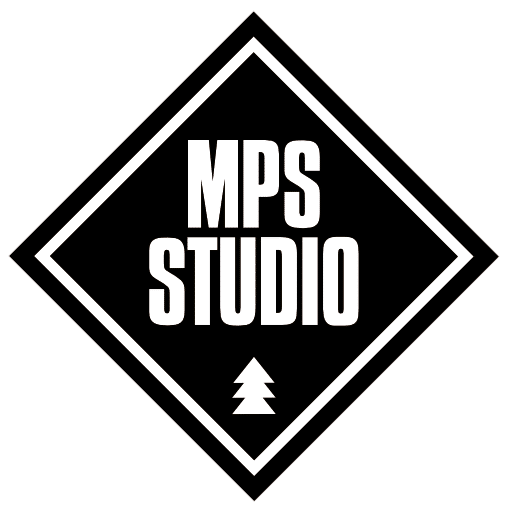Anton Steck has played many historical violins, and the Stradivarius “Back, Josefowitz” was something very special for him too.
The MPS studio has a rich history of recording violin sounds. In addition to classical recordings, it was above all renowned jazz violinists who came to the Black Forest in the 1960s and 1970s. Names such as Jean-Luc Ponty, Don Sugarcane Harris, Stuff Smith, Stephane Grappelli, Didier Lockwood, Zbigniew Seifert, Michal Urbaniak and Svend Asmussen are closely associated with the history of the SABA studio in Villingen, which became the MPS studio in 1968. They were recorded and published here. The fact that the father of MPS founder Hans-Georg Brunner-Schwer was himself a professional violinist is not entirely innocent. Fritz Brunner was a trained musician whose friend Herbert von Karajan regularly came to visit him in Villingen.
THE STRADIVARI MYTH MEETS THE RECORDING STUDIO WITH THE “MOST PERFECT SOUND”
In 2024, the historic Stradivari violin “c.1667 Back, Josefowitz” from the hand of the legendary violin-making luminary Antonio Stradivari from the year 1667, sampled in the equally legendary MPS studio in Villingen on the edge of the Black Forest. This project thus brings together two great figures from European music history, albeit with a time gap of over 300 years. A team of experts has played and recorded the unique sound of the violin note for note and will soon be available as studio software.

A selection of microphones from DS-Audio used for the recordings. (Photo: Tøni Schifer / Monitorpop)
In 1667, within the historic walls of Cremona, the birthplace of violin making, a legend was born. There, under the masterful hands of Antonio Stradivari, arguably the most famous violin maker of all time, the violin known today as the “Back, Josefowitz” was created: an instrument of extraordinary beauty and rich sound that has been part of countless musical moments over the centuries. Crafted in the Baroque period, the “Back, Josefowitz” reflects the violin making practices and musical demands of its time.
Like many other instruments of that era, it was adapted to the requirements of new repertoires and larger concert halls in the 18th century and was modified and restored several times during its lifetime. Today, more than 350 years later, this violin will once again enchant international audiences with its unique, original sound.
As part of a globally unique and ambitious scientific project, a team of over 20 violin making experts embarked on a fascinating journey into the past. The aim: to restore the “Back, Josefowitz” to its original baroque state. Apart from the “Gould” Stradivarius, which is on display at the Metropolitan Museum in New York, the “Back, Josefowitz” is the only Stradivarius violin that has been restored to its original Baroque condition.
The aim of the restoration project was ambitious: to reverse the changes of the past with the utmost care, without disturbing the unique, original essence of the instrument. With meticulous precision and specialist knowledge, the experts – including violin maker and baroque expert Johannes Loescher – dedicated themselves to the task of restoring the original sound of this instrument. It is a complex process that has been documented at every stage, offering insight to future generations of luthiers, soloists and enthusiasts.
Mayumi Hirasaki, professor of baroque violin at the renowned Mozarteum in Salzburg, actively supervised the entire process and is delighted with the results. She analyzes the change in the sound in detail and notes that the violin resonates much more freely after the restoration, which comes close to the sound it probably had in 1667. It is an impressive comparison that demonstrates the audible rebirth of the “Josefowitz”.

The historical Stradivarius violin “c.1667 Back, Josefowitz (© Jost Thöne Verlag)
The “Back, Josefowitz” sounds now as it did when it first left Stradivari’s hands: full of vitality, power and emotional depth. This is confirmed by stress and vibration analyses carried out by experts Andreas Jacobi and Luca Jost.
Tøni Schifer, chairman of the MPS-Studio e.V., heard about this project and convinced the Italian Art Foundation, owner of the violin, to have this instrument sampled in Villingen in the famous MPS-Studio in order to make the sound of the unique violin available to other studios as software and musical memory for the general public. After a visit to the historic studio in Villingen, they were convinced by the idea. Schifer’s agency Monitorpop was not only responsible for the safety of the valuable instrument in this extensive project, but also cast the team for this special endeavor, as well as the complete handling up to the finished product: a studio software. The valuable instrument was recorded tone for tone by the renowned baroque violin professor Anton Steck in the MPS recording studio. Dieter Schöpf from the top-class microphone manufacturer “DS-Audio” was responsible for the microphones. The sound engineer and specialist for sampling recordings Nicolay Ketterer recorded the historical sounds over several days and not only showed the necessary patience for such an ambitious project, but also impressed with his very fine ear. The parties have agreed not to disclose the date of admission. The programming of the recordings was carried out by Robin Mussmann. Tøni Schifer / Monitorpop designed the visual realization of the programming graphics. The MPS-Studio e.V. association was able to finance some of its running costs from the rental income. A very successful project for everyone involved, another milestone in the history of the MPS studio and great, harmonious teamwork with a high fun factor.

Nicolay Ketterer, Dieter Schöpf and Anton Steck with Stradivari violin in the MPS studio (Photo © Tøni Schifer / Monitorpop)
While the “c.1667 Back, Josefowitz” returns to Stradivari’s place of work as a permanent loan and will soon be exhibited in the “Muso del Violino” in Cremona, where the instrument can be brought to life virtually. We will report on this as soon as the software is available.

